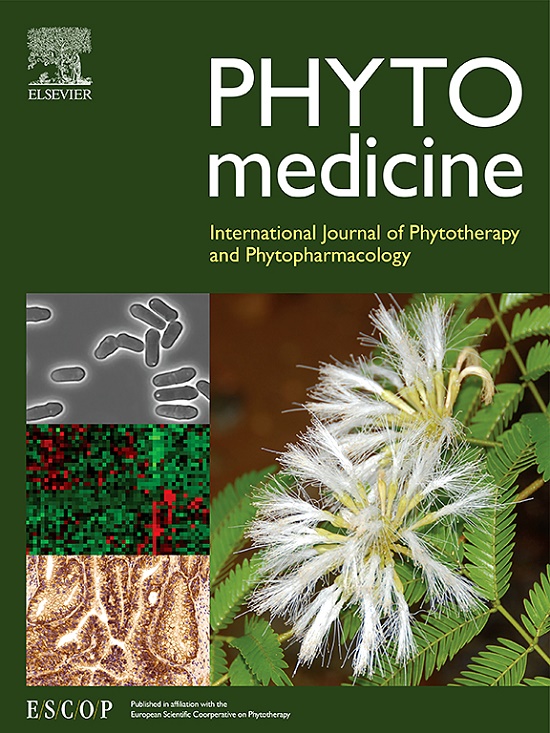Linarin attenuates hyperuricemic nephropathy by modulating Nrf2/Keap1 and TLR4/NF-κB signaling pathways
IF 6.7
1区 医学
Q1 CHEMISTRY, MEDICINAL
引用次数: 0
Abstract
Background
Hyperuricemia (HUA) can lead to hyperuricemic nephropathy (HN) as a result of prolonged uric acid (UA) supersaturation, primarily characterized by excessive inflammation and oxidative stress. In clinical practice, the absence of specific drugs for HN treatment necessitates the use of urate-lowering drugs, despite their lack of reno-protective properties. Linarin, the principal pharmacological constituent of Chrysanthemum indicum L. (C. indicum L.), exhibits diverse bioactivities, including anti-inflammatory, antioxidant, and nephroprotective effects. However, there have been no reports on linarin's ability to mitigate HN, and the underlying mechanisms remain unexplored.
Purpose
This study aimed to investigate the mechanisms of linarin on ameliorating HN, with a particular emphasis on oxidative stress and inflammatory pathways.
Methods
A HUA mouse model was developed using male ICR mice treated with hypoxanthine and potassium oxonate. Additionally, an adenosine-induced hyperuricemic cell model was established in NRK-52E cells. Following linarin treatment, serum UA levels and renal function parameters were assessed. The expression of proteins associated with UA production and excretion, oxidative stress, inflammation, and apoptosis was evaluated using western blot, immunohistochemical, and immunofluorescence analyses. Furthermore, Nrf2 knockout mice and Nrf2 inhibitor ML385 were utilized to investigate the mechanism of linarin on improving HN.
Results
Linarin significantly decreased the serum UA levels, inhibited XO activity and regulated UA transporter in the HUA mice. Moreover, linarin reversed the renal index, serum BUN and Cr levels, along with the expression levels of KIM-1, apoptosis-related molecules. Additionally, linarin obviously reduced the levels of TNF-α, IL-1β and IL-6, and alleviated renal inflammatory via suppressing the TLR4, p-NF-κB and p-IκBα levels. Furthermore, linarin was able to reverse the levels of SOD and MDA, and the expression of Nrf2, Keap1, NQO1, and HO-1 to mitigate oxidative stress both in vitro and in vivo. Inhibition of Nrf2 further confirmed that the renoprotective effect of linarin was linked to the activation of Nrf2.
Conclusion
This study is the first to propose linarin as a potential natural compound for alleviating HN by modulating the Nrf2/Keap1 and TLR4/NF-κB signaling pathways, providing a promising strategy for HN.

求助全文
约1分钟内获得全文
求助全文
来源期刊

Phytomedicine
医学-药学
CiteScore
10.30
自引率
5.10%
发文量
670
审稿时长
91 days
期刊介绍:
Phytomedicine is a therapy-oriented journal that publishes innovative studies on the efficacy, safety, quality, and mechanisms of action of specified plant extracts, phytopharmaceuticals, and their isolated constituents. This includes clinical, pharmacological, pharmacokinetic, and toxicological studies of herbal medicinal products, preparations, and purified compounds with defined and consistent quality, ensuring reproducible pharmacological activity. Founded in 1994, Phytomedicine aims to focus and stimulate research in this field and establish internationally accepted scientific standards for pharmacological studies, proof of clinical efficacy, and safety of phytomedicines.
文献相关原料
公司名称
产品信息
索莱宝
ROS measurement kit
 求助内容:
求助内容: 应助结果提醒方式:
应助结果提醒方式:


